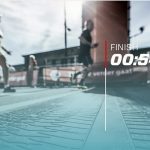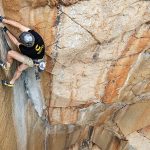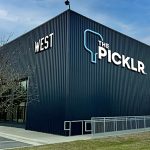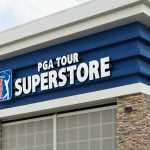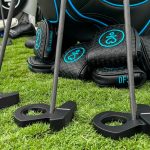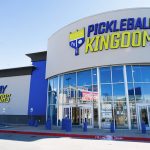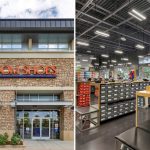Heavy and frequent discounting lured customers into major retail outlets during June, prompting bargain-hunters to open their wallets and purses and drive the overall market far past analysts expectations.
Strength throughout every retail sector drove aggregate same-store sales up 6.9 percent for the five-week fiscal month of June, according to the International Council of Shopping Centers, better than the 4 percent to 5 percent growth range originally forecasted. June, which is when many retailers clear out summer merchandise to make room for fall product, is traditionally the second-most important month for retailers. Excluding fuel sales, industry comps were up by 5.5 percent.
The ICSC reported that the 1.4 percentage point June lift attributed to fuel prices compared with an average lift of 1.2 percentage points during the prior two months. Also driving sales during June were easing fuel prices, solid Fathers Day sales and warm weather, which aided the sale of summer clothing. Pent up demand resulting from a long, draw-out cold and weather was also seen as a contributor.
Heavy promotional activity is somewhat the norm for June, when retailers start clearing out summer product to make way for back-to-school inventory, but the most recent month was even more promotional than usual, with some retailers slashing selling prices by as much as 80 percent to combat market challenges such as higher-fuel prices and a weak job market. In a surprise jobs report out Friday, the federal government indicated that the country added only 18,000 jobs in June, resulting in an unemployment rate of 9.2 percent for the month.
The spike in consumer activity left many analysts wondering how the consumer will respond to higher selling prices during the BTS season, a period when retailers depend on full-priced sales to rescue margins from June discounts. Many analysts have also surmised customers will return to their conservative spending habits after splurging in June due to comparatively lower gas prices, discounted merchandise and a feeling that they released some the pent-up spending from earlier in the year. The jobs report may make everyone just a bit cautious.
Moreover, the looming concerns of higher material prices, higher labor wages in China and stubborn food prices may be preemptive signs of a disappointing back-to-school selling period.
In fact, several recent reports cited a Conference Board survey released recently indicating that consumer confidence was at a seven-year low for June, something analysts say is directly related to a weak job recovery market and stagnant wages. For the most part, retailers are remaining tempered, as very few raised quarterly earnings guidance despite the upbeat report.
According to the ICSC, its likely June is the exception to the rule rather than a representation of shifting trends. Junes outcome is more likely due to a confluence of positive factors that temporarily lifted sales above its already solid and strong year-to-date trend, reported the ICSC. Looking ahead, the ICSC expects industry sales to improve between 4.5 percent and 5.5 percent in July – which is more in-line with the YTD trend – and by 3.5 percent to 4.5 percent excluding fuel.
According to the ICSC, its likely June is the exception to the rule rather than a representation of shifting trends. Junes outcome is more likely due to a confluence of positive factors that temporarily lifted sales above its already solid and strong year-to-date trend, reported the ICSC. Looking ahead, the ICSC expects industry sales to improve between 4.5 percent and 5.5 percent in July – which is more in-line with the YTD trend – and by 3.5 percent to 4.5 percent excluding fuel.
Among market segments tracked by Sports Executive Weekly (see chart on page 3), Warehouse segments fared the best, exhibiting a consolidated 17.4 percent comp growth on fuel prices and strengthening foreign currencies. Comps at Costco (+14.0 percent) were up by 8 percent excluding fuel and foreign currency fluctuations while BJs Wholesale (+7.3 percent) was up just 3.5 percent excluding fuel sales. Also of note, BJs, which acknowledged in February that it was on the block, confirmed recently that it agreed to sell itself to a group of private equity firms for $2.8 billion in cash.
Luxury stores fared very well also, benefitting from a consumer that has rebounded faster than middle- and lower-income consumers. At Nordstrom (+7.9 percent), comps came in better than forecast while Saks (+11.9 percent) significantly outpaced projections on strength from womens shoes and designer apparel, mens clothing, sportswear, shoes and accessories, among others.
At other department stores, gains were more moderate, with J.C. Penney (+2.0 percent) posting growth but missing expectations despite strong sales of fine jewelry and womens apparel. JCP management cut guidance significantly following Junes comp sales report, citing a softer than anticipated selling environment for the moderate customer and a resulting higher level of promotional activity during the quarter.
Conversely, Macys (+6.7 percent) boosted Q2 guidance after reporting growth from all units – Macys, Bloomingdales and online. At Kohls (+7.5 percent), comps were much better-than-expected on strength from all business lines.
For the discounters, Target (+4.5 percent) turned in a strong month, beating expectations on improving sales of groceries and seasonal merchandise. Management said the companys decision to expand its grocery section has paid off – particularly with investments in its P-fresh fresh food program. The TJX Cos.
(+5.0 percent) also topped Wall Street forecasts as customer traffic rose and its Marshalls and TJ Maxx stores performed better than expected. Management also confirmed second quarter earnings at or slightly above the high end of its guidance of between 81 cents to 86 cents per share. Our continued strong trends in June bode well for the balance of the summer selling season and into fall, said CEO Carol Meyrowitz in a conference call with analysts. At Stein-Mart (-1.5 percent), comps missed despite strength in several key selling markets while Ross Stores (+5.0 percent) out-performed expectations due to strong demand for dresses and accessories.
For the teen segment, The Buckle (+10.8 percent) and Zumiez (+9.8 percent) continued double-digit growth while Gap, Inc (+1.0 percent) eked out a gain for the first time in several months on solid growth from its Banana Republic (+3.0 percent) and Gap NA (+1.0 percent) brands.
Zumiez Comps up 9.8% in June…
Zumiez Inc. reported comps for the five-week June period ended July 2 increased 9.8 percent as net sales increased 16.8 percent to approximately $43.5 million. June weekly comps were up 7.7 percent, 10.2 percent, 11.5 percent, 13.0 percent and 6.7 percent for weeks one through five, respectively.
On a pre-recorded call, management said the increase in comp sales for the month was driven by an increase in comp store transactions and an increase in dollars per transaction. Dollars per transaction were up for the five-week period due to an increase in average unit retail, partially offset by a decrease in units per transaction.
Footwear, accessories, mens, hardgoods and juniors posted positive comps, and boys posted a negative comp for the month.
Quarter-to-date, comps were up 8.9 percent on top of 9.3 percent a year ago while year-to-date comps improved 11.1% on top of 9.2% for comp period last year.
The Buckle See June Comps Up 10.8%…
The Buckle reported that June comps improved 10.8 percent as net sales increased 15.2 percent to $79.6 million for the five-week fiscal month.
Mens sales, which represented 43 percent of total sales, were up about 16.5 percent on strength from denim, woven and knit shirts, active apparel and accessories and footwear.
Revenues from the womens side, which represented 57 percent of total sales, were up approximately 14 percent. Strong categories in the women’s side included denim, woven and knit shirts, active apparel, accessories and footwear. Price points on the mens side were up 6 percent, while the womens business experienced a 3 percent increase.
Combined men and women footwear sales comped up 34 percent versus June 2010 and total accessories were up 17 percent. The segments accounted for about 9.5 percent and 5.5 percent of total sales, respectively.

